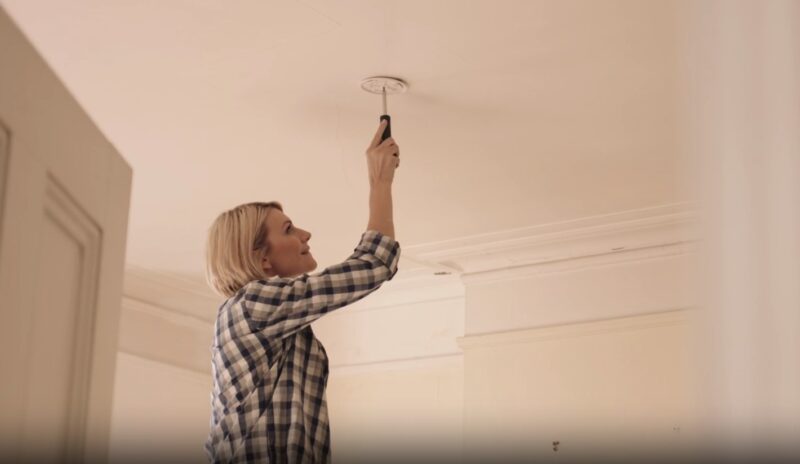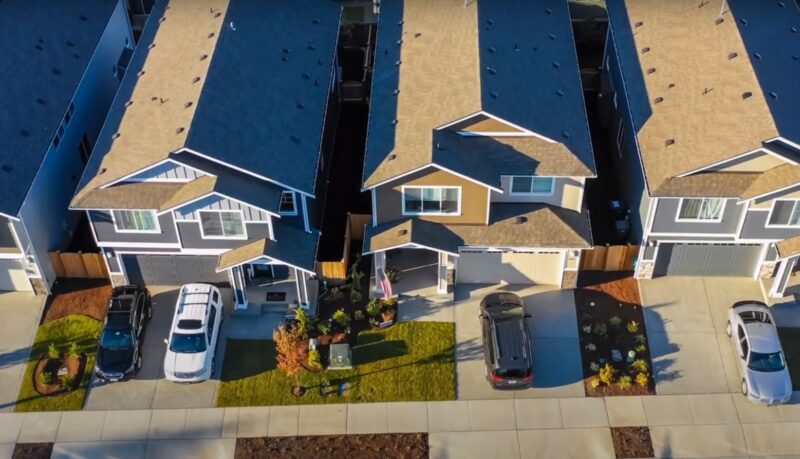Homeowners insurance is a vital aspect of securing one’s home and peace of mind.
Among the various policies available, HO3 and HO8 stand out for their unique coverage options tailored to different types of homes.
Today, I will clarify the distinctions between these two policies, offering insights into their coverage, suitability, and practical implications for homeowners.
Key takeaways:
- Policy Differences: HO3 policies offer broader coverage with both open and named perils for newer homes, while HO8 is designed specifically for older homes, covering only named perils.
- Valuation Methods: HO3 policies typically use an Actual Cash Value basis, whereas HO8 policies often cover homes at their market or actual cash value, which can be lower than the replacement cost.
- Suitability: HO3 is suitable for most homeowners due to its comprehensive coverage, while HO8 is tailored for older or historic homes with potentially higher replacement costs than market value.
- Financial Considerations: Homeowners should assess potential out-of-pocket expenses, as HO8 might result in lower claim payouts due to its focus on actual cash value.
- Customization Options: Both HO3 and HO8 policies offer customization through endorsements and add-ons, allowing homeowners to tailor their coverage according to specific needs and risks.
HO3 Policies: Special Form Coverage

HO3 policies, often referred to as Special Form policies, offer a comprehensive approach to homeowners insurance.
This policy type is distinguished by its dual coverage approach, combining both open perils and named perils coverage.
The primary advantage of HO3 policies lies in their inclusivity; they cover a wide array of risks, ensuring homeowners are protected against a variety of unforeseen events.
Specifics of HO3 Coverage
Key aspects of HO3 coverage include protection against risks such as fire, theft, smoke damage, and several other named perils.
The defining characteristic of an HO3 policy is its open perils coverage for the dwelling, meaning it covers all perils except those explicitly excluded in the policy.
Personal property, however, is covered only for named perils.
This distinction is crucial for homeowners to understand, as it affects how claims are processed and what damages are covered.
HO8 Policies: Older Form Home Coverage

HO8 policies, also known as Older Form Home insurance, are specifically designed for older homes.
These policies cater to houses that may not meet the criteria for newer forms of insurance due to age, architectural uniqueness, or historical value.
HO8 stands out for its focus on covering specific perils, with a list that typically includes fire, theft, vandalism, and seven other named perils.
Coverage Limitations and Valuation
One of the critical aspects of HO8 policies is their approach to valuation.
These policies generally cover homes at their market or actual cash value, not at the cost of replacement.
This distinction can significantly impact claim payouts, particularly for older homes where the replacement cost might far exceed the market value.
Additionally, certain perils like water damage and falling objects might not be covered under HO8, necessitating a careful review of the policy terms.
Comparative Analysis: HO3 vs. HO8

| Aspect | HO3 (Special Form) | HO8 (Older Form Home) |
| Coverage Type | Open perils for dwelling, named perils for personal property | Named perils only |
| Target Homes | All types of homes | Specifically older homes |
| Valuation Method | Actual Cash Value | Market or Actual Cash Value |
| Covered Perils | Broad range including theft, fire, smoke, and more | Limited to 10 specific perils including fire, theft, vandalism |
| Suitability | General homeowners | Homeowners with older or historic homes |
Deciding Between HO3 and HO8
The choice between an HO3 and HO8 policy largely depends on the age and condition of your home.
HO3 policies, with their broader coverage, are generally suitable for most homeowners.
In contrast, HO8 policies cater to a specific niche – older homes that may have historical value or unique architectural features.
Knowing the specific needs of your home and the coverage each policy offers is crucial in making an informed decision.
Evaluating the Impact on Homeowners

Financial Considerations
When comparing HO3 and HO8 policies, it’s essential to consider the financial implications.
For newer homes, an HO3 policy typically provides a more comprehensive coverage that aligns with the replacement cost of the property.
This can be crucial in the event of significant damage or loss, ensuring homeowners can rebuild or repair their homes without facing substantial financial burdens.
In contrast, the HO8 policy, with its focus on actual cash value for older homes, may result in lower claim payouts.
This is particularly relevant for historic homes where the replacement cost might be considerably higher than the market value.
Homeowners need to assess their financial readiness to handle potential out-of-pocket expenses for repairs or replacements not fully covered by an HO8 policy.
Risk Assessment and Coverage
Risk assessment plays a pivotal role in choosing between an HO3 and HO8 policy.
Homeowners must evaluate the likelihood of certain perils and the extent of coverage required.
While HO3 policies offer broader protection, including coverage for risks not explicitly named, HO8 policies provide a more limited scope, covering only specified perils.
This focused coverage might leave some homeowners vulnerable to risks that are more prevalent in their specific location or for their home type.
Additional Policy Features and Considerations

Endorsements and Add-ons
Both HO3 and HO8 policies offer opportunities for customization through endorsements and add-ons.
These options allow homeowners to tailor their coverage to include perils or circumstances not covered in the standard policy.
For instance, homeowners in flood-prone areas might add flood coverage, which is typically not included in standard policies.
Loss of Use Coverage
Loss of use coverage is another critical aspect to consider. This coverage provides financial assistance for living expenses if your home becomes uninhabitable due to a covered loss.
Most HO3 policies include this coverage, offering additional security to homeowners during the rebuilding or repair process.
The extent of this coverage under HO8 policies can vary, making it vital to understand the specifics of your policy.
Market Trends and Insurance Provider Options

Evolving Insurance Landscape
The homeowners’ insurance market is constantly evolving, with insurers adapting to changing risks and homeowner needs.
This evolution impacts the availability, pricing, and features of HO3 and HO8 policies.
Staying informed about market trends and emerging risks can help homeowners make more educated decisions about their insurance needs.
Choosing the Right Insurance Provider
Selecting the right insurance provider is as important as choosing the correct policy.
Factors to consider include the insurer’s reputation, customer service, claim processing efficiency, and additional benefits offered.
Companies like Hippo, known for their affordable coverage and innovative features, represent the changing landscape of home insurance, emphasizing the importance of researching and comparing options.
Action Steps for Homeowners

Regular Policy Review and Updates
Homeowners should regularly review and update their insurance policies.
This ensures coverage remains adequate as circumstances change, such as home renovations or changes in market value.
Annual reviews or consultations with insurance professionals can provide valuable insights and help homeowners stay adequately protected.
Educating Yourself and Seeking Expert Advice
Finally, educating yourself about the intricacies of homeowners insurance and seeking expert advice when necessary is crucial.
Knowing the specifics of HO3 and HO8 policies, assessing your home’s needs, and staying informed about market trends will empower you to make the best insurance decisions for your home.
FAQs
Can I switch from an HO8 to an HO3 policy if I renovate my older home?
Yes, renovating an older home may make it eligible for an HO3 policy.
However, it’s essential to consult with your insurance provider to ensure the renovations meet their criteria for policy conversion.
Are natural disasters like earthquakes and floods covered under HO3 or HO8 policies?
Typically, natural disasters like earthquakes and floods are not covered under standard HO3 or HO8 policies.
Homeowners need to purchase separate endorsements or policies for such coverage.
Is personal liability coverage included in both HO3 and HO8 policies?
Yes, both HO3 and HO8 policies generally include personal liability coverage, which protects homeowners against claims for bodily injury or property damage sustained by others on their property.
How does the age of my home determine eligibility for an HO3 or HO8 policy?
Homes that are significantly older, often 40 years or more, and have historical value or outdated features, are typically considered for HO8 policies.
Newer or renovated homes are generally eligible for HO3 policies.
Can I get coverage for high-value items like jewelry and art under these policies?
Standard HO3 and HO8 policies have limited coverage for high-value items.
Homeowners can purchase additional endorsements to adequately cover expensive personal property like jewelry and art.
If my home has unique architectural features, which policy is more suitable?
For homes with unique architectural features, particularly if they are older, an HO8 policy might be more suitable.
These policies are designed to address the specific needs of older homes with unique characteristics.
Final Thoughts
Homeowners insurance is more than just a financial safeguard; it’s a commitment to protecting your home and family.
Whether you choose an HO3 or HO8 policy, it’s essential to understand the specifics of what each policy covers and how it aligns with the needs of your home.
Providers like Hippo offer competitive options with additional benefits like free water leak sensors, underscoring the importance of shopping around and finding a policy that fits your unique circumstances.
Keep in mind that with over 70% of people not actively shopping for homeowners insurance, taking the initiative to understand and choose the right policy for your home can make all the difference.
Whether it’s an HO3 or HO8 policy, the key is to find coverage that offers peace of mind and security for your home and family.
